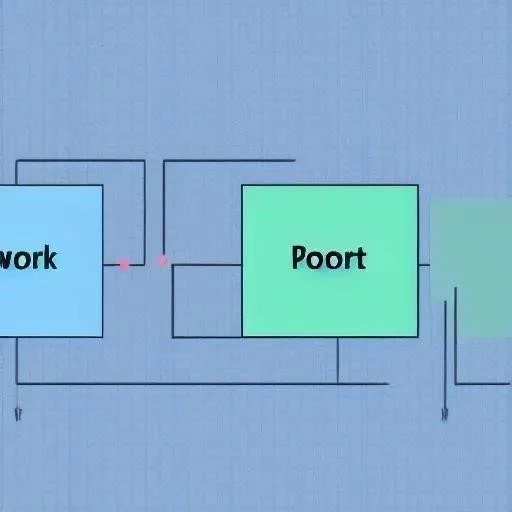In the ever-expanding world of interconnected devices‚ understanding the fundamental building blocks of network infrastructure is crucial․ A core component facilitating seamless communication between these devices is the network switch․ This essential piece of hardware acts as a traffic director‚ intelligently routing data packets to their intended recipients‚ ensuring efficient and secure network operation․ This article delves into the definition of a network switch‚ explores its key features‚ and highlights some prominent manufacturers in the industry․
A network switch is a networking device that filters and forwards data packets between devices on a network․ Unlike a hub‚ which broadcasts data to all connected devices‚ a switch learns the MAC addresses of connected devices and only sends data to the intended recipient․ This intelligent forwarding significantly reduces network congestion and improves overall performance․
- Intelligent Forwarding: Switches use MAC addresses to forward data directly to the destination․ Hubs broadcast data to all ports․
- Collision Domains: Each port on a switch is its own collision domain‚ reducing collisions․ Hubs have a single collision domain for all ports․
- Bandwidth Utilization: Switches improve bandwidth utilization by only sending data where it needs to go․ Hubs waste bandwidth by broadcasting․
Network switches come equipped with a variety of features that enhance their functionality and performance․ These features contribute to network security‚ manageability‚ and overall efficiency․
- VLAN (Virtual LAN) Support: Allows network administrators to segment the network into logical groups‚ improving security and manageability․
- QoS (Quality of Service): Prioritizes network traffic based on application or user‚ ensuring critical applications receive the necessary bandwidth․
- PoE (Power over Ethernet): Provides power to devices such as IP phones and security cameras over the network cable‚ simplifying deployment and reducing cabling costs․
- Port Mirroring: Allows network administrators to monitor network traffic by copying traffic from one port to another․
- Link Aggregation: Combines multiple network links into a single logical link‚ increasing bandwidth and redundancy․
The market for network switches is dominated by several leading manufacturers‚ each offering a wide range of products to meet the needs of different organizations․
- Cisco: A global leader in networking equipment‚ offering a comprehensive portfolio of switches for businesses of all sizes․
- Juniper Networks: Known for its high-performance switches and advanced networking solutions․
- HP Enterprise: Offers a broad range of switches designed for enterprise networks․
- Dell Technologies: Provides a variety of switches suitable for small to medium-sized businesses․
- Arista Networks: Specializes in high-performance switches for data centers and cloud environments․
What is the primary function of a network switch?
The primary function is to forward data packets only to the intended recipient‚ improving network efficiency․
How does a switch differ from a router?
A switch operates at Layer 2 (Data Link Layer) of the OSI model and forwards data based on MAC addresses․ A router operates at Layer 3 (Network Layer) and forwards data based on IP addresses․
What is the purpose of VLANs?
VLANs segment a network into logical groups‚ improving security‚ manageability‚ and performance․
Is a network switch necessary for a home network?
For a small home network‚ a router with built-in switch functionality is often sufficient․ However‚ for larger home networks or those with numerous wired devices‚ a dedicated switch can improve performance․
Choosing the right network switch is a critical decision for any organization․ Consider your specific needs‚ budget‚ and future growth when evaluating different options․ The capabilities of the network switch itself allows for a stable and efficient data transfer rate․
In the ever-expanding world of interconnected devices‚ understanding the fundamental building blocks of network infrastructure is crucial․ A core component facilitating seamless communication between these devices is the network switch․ This essential piece of hardware acts as a traffic director‚ intelligently routing data packets to their intended recipients‚ ensuring efficient and secure network operation․ This article delves into the definition of a network switch‚ explores its key features‚ and highlights some prominent manufacturers in the industry․
Defining the Network Switch
A network switch is a networking device that filters and forwards data packets between devices on a network․ Unlike a hub‚ which broadcasts data to all connected devices‚ a switch learns the MAC addresses of connected devices and only sends data to the intended recipient․ This intelligent forwarding significantly reduces network congestion and improves overall performance․
Key Differences Between Switches and Hubs
- Intelligent Forwarding: Switches use MAC addresses to forward data directly to the destination․ Hubs broadcast data to all ports․
- Collision Domains: Each port on a switch is its own collision domain‚ reducing collisions․ Hubs have a single collision domain for all ports․
- Bandwidth Utilization: Switches improve bandwidth utilization by only sending data where it needs to go․ Hubs waste bandwidth by broadcasting․
Features of a Network Switch
Network switches come equipped with a variety of features that enhance their functionality and performance․ These features contribute to network security‚ manageability‚ and overall efficiency․
- VLAN (Virtual LAN) Support: Allows network administrators to segment the network into logical groups‚ improving security and manageability․
- QoS (Quality of Service): Prioritizes network traffic based on application or user‚ ensuring critical applications receive the necessary bandwidth․
- PoE (Power over Ethernet): Provides power to devices such as IP phones and security cameras over the network cable‚ simplifying deployment and reducing cabling costs․
- Port Mirroring: Allows network administrators to monitor network traffic by copying traffic from one port to another․
- Link Aggregation: Combines multiple network links into a single logical link‚ increasing bandwidth and redundancy․
Leading Network Switch Manufacturers
The market for network switches is dominated by several leading manufacturers‚ each offering a wide range of products to meet the needs of different organizations․
- Cisco: A global leader in networking equipment‚ offering a comprehensive portfolio of switches for businesses of all sizes․
- Juniper Networks: Known for its high-performance switches and advanced networking solutions․
- HP Enterprise: Offers a broad range of switches designed for enterprise networks․
- Dell Technologies: Provides a variety of switches suitable for small to medium-sized businesses․
- Arista Networks: Specializes in high-performance switches for data centers and cloud environments․
FAQ Section
What is the primary function of a network switch?
The primary function is to forward data packets only to the intended recipient‚ improving network efficiency․
How does a switch differ from a router?
A switch operates at Layer 2 (Data Link Layer) of the OSI model and forwards data based on MAC addresses․ A router operates at Layer 3 (Network Layer) and forwards data based on IP addresses․
What is the purpose of VLANs?
VLANs segment a network into logical groups‚ improving security‚ manageability‚ and performance․
Is a network switch necessary for a home network?
For a small home network‚ a router with built-in switch functionality is often sufficient․ However‚ for larger home networks or those with numerous wired devices‚ a dedicated switch can improve performance․
Choosing the right network switch is a critical decision for any organization․ Consider your specific needs‚ budget‚ and future growth when evaluating different options․ The capabilities of the network switch itself allows for a stable and efficient data transfer rate․
Making the Right Choice: Further Questions to Consider
So‚ now that you understand what a switch is‚ are you ready to select the ideal one for your network? What factors should truly drive your decision? Is it simply about the number of ports‚ or are there more nuanced considerations at play?
Decoding Your Needs: Questions for Network Design
- What type of network are you building or expanding? Is it a small home network‚ a bustling office environment‚ or a demanding data center?
- How many devices will need to connect to the network‚ both now and in the future? Should you factor in future scalability when selecting a switch?
- What is the expected bandwidth usage? Will you be transferring large files‚ streaming high-definition video‚ or running latency-sensitive applications?
- What security features are essential for your network? Do you need VLAN support for network segmentation‚ or more advanced features like intrusion detection?
- Is Power over Ethernet (PoE) a requirement for devices like IP phones or security cameras? Could PoE simplify your network cabling and deployment?
Diving Deeper: Technical Considerations
- What switching capacity do you require? Does the switch have sufficient bandwidth to handle the expected traffic load?
- What type of ports do you need? Are Gigabit Ethernet ports sufficient‚ or do you require 10 Gigabit or even faster connections?
- Does the switch support advanced features like link aggregation or quality of service (QoS)? Could these features improve network performance and reliability?
- What management options are available? Can the switch be managed through a web interface‚ command-line interface‚ or network management software?
- What is the switch’s power consumption? Is it energy-efficient and will it help reduce your operating costs?
Considering these questions‚ are you now better equipped to navigate the vast landscape of network switches? Might a structured approach to answering these questions lead you to the perfect switch for your specific needs? Doesn’t taking the time to carefully assess your network requirements ultimately save you time‚ money‚ and frustration in the long run?
Network Switch Selection: Beyond the Basics
So you’ve explored the definition‚ features‚ and leading manufacturers of network switches․ You’ve even considered some critical questions to guide your selection․ But are you truly ready to commit to a specific model? Shouldn’t we delve deeper into some often-overlooked aspects before making that final decision?
Unearthing Hidden Costs: The Total Cost of Ownership
- Have you factored in the long-term maintenance costs? Will firmware updates be frequent and easy to apply‚ or will they require specialized expertise?
- What is the expected lifespan of the switch? Should you consider a model with a longer warranty or a proven track record of reliability?
- Are there any licensing fees associated with the switch’s advanced features? Could these fees significantly increase the overall cost of ownership?
- What is the power consumption of the switch under different load conditions? Will it significantly impact your electricity bill?
- Does the switch require specialized cooling or rack space? Are there any additional infrastructure costs to consider?
Future-Proofing Your Network: Scalability and Flexibility
- Will the switch be able to handle future increases in network traffic? Does it have sufficient bandwidth and processing power to accommodate growth?
- Does the switch support emerging technologies like Software-Defined Networking (SDN)? Could SDN improve network agility and automation?
- Is the switch compatible with your existing network infrastructure? Will it seamlessly integrate with your routers‚ firewalls‚ and other devices?
- Does the switch offer a variety of port configurations and expansion options? Can you easily add more ports or upgrade to faster speeds as needed?
- Can the switch be easily reconfigured to meet changing business needs? Does it offer flexible VLAN support and other customizable features?
Security Considerations: Protecting Your Data
- Does the switch offer robust security features like Access Control Lists (ACLs) and port security? Will these features effectively protect your network from unauthorized access?
- Does the switch support encryption protocols like SSL/TLS? Can you securely manage the switch remotely?
- Does the manufacturer regularly release security patches and updates? Will you be promptly notified of any vulnerabilities?
- Is the switch vulnerable to common network attacks like Denial-of-Service (DoS) attacks? Does it have built-in mechanisms to mitigate these threats?
- Does the switch comply with industry security standards and regulations? Will it help you meet your compliance obligations?
Now‚ armed with these additional questions‚ do you feel more confident in your ability to choose the perfect network switch? Shouldn’t a thorough evaluation of these factors lead to a more informed and ultimately more successful networking decision? Isn’t the peace of mind that comes from knowing you’ve considered all the angles worth the extra effort?
A well-chosen network switch can be the backbone of your network‚ ensuring reliable and efficient data transfer․ However‚ neglecting these critical considerations could lead to costly mistakes and performance bottlenecks․ So‚ are you ready to make a truly informed decision and unlock the full potential of your network?


